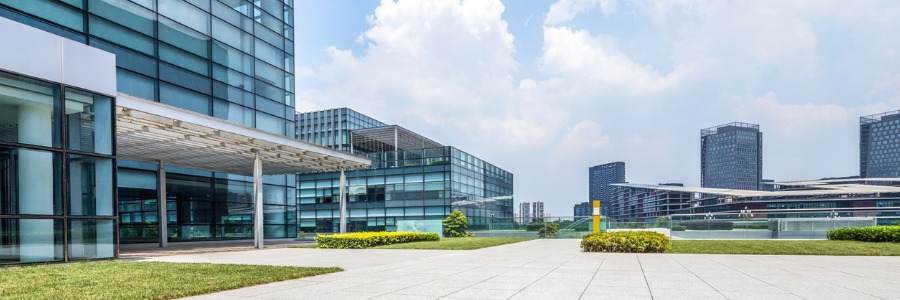
Water efficiency in large buildings plays a huge role in what makes a building “Green” and lends the opportunity to utilize the best technology available today. Smart technologies and strategies decrease the amount of water consumption in a large building, and significantly reduces expenses in the operating budget.
The key components of water efficiency that will impact budgeted water expenses are:
- Reducing indoor potable water use
- Reducing overall non-potable water consumption
Basic water efficiency measures that are used to reduce overall water consumption include:
- Installing low flow plumbing fixtures – uses 1.3 gallons per flush instead of 7 gallons per flush, a water expense saving of over 80%.
- Recycle and re-use grey water – gently used water from sinks that hasn’t come in contact with toilet water, used for outdoor irrigation.
- Pressure Reducing Valves – maintains consistent water pressure at water fixtures across entire building from top to bottom.
- Rainwater Harvesting – involves collection of run-off rainfall from roof tops into gutters and channeling water into downspouts into a storage vessel, rain barrel or large cistern, to be used for outdoor irrigation or indoor non-potable uses.
Utilizing water saving technology will conserve water and save on operating water expenses, but sometimes leaks in large buildings are hidden, and can go undetected for weeks, months, or years. You can’t manage what you can’t see, and the damage of hidden leaks can be devastating. The impact on a company’s water expense budget can be tremendous, starting with a significant spike on the monthly water bill and culminating in costly repairs of structural damages.
Potential Losses From Water Leaks
| Malfunction | Leaking Flow Rate (gallons per minute) | Water Loss | Estimated Cost of Water Loss |
| Leaking Toilet | 0.5 gpm | 21,600 gallons per month | $2,100 per year |
| Drip Irrigation Malfunction | 1.0 gpm | 43,200 gallons per month | $4,300 per year |
| Unattended Water Hose at Night | 10.0 gpm | 5,400 gallons per day | $16,000 per year |
| Broken Distribution Line For: One Night One Day One Week One Month | 15.0 gpm 15.0 gpm 15.0 gpm 15.0 gpm | 8,100 gallons 21,600 gallons 151,200 gallons 648,000gallons | Up to $64,000 per year |
| Tempering Water Line on a Steam Sterilizer Stuck in the On Position | 2.0 gpm | 86,400 gallons per month | $8,600 per year |
| Stuck Float Valve in a Cooling Tower | 5.0 gpm | 216,000 gallon per month | $21,000 per year |
Monitoring a large building’s water usage is critical. If a pipe breaks inside a wall, a leaking toilets goes undetected, or there’s an unseen malfunction in the drip irrigation system, not only will this waste water, but also thousands of dollars which will unexpectedly impact the company’s operating budget. However, with today’s newest, cutting edge technology, hidden leaks and/or malfunctions in a large building’s water usage can be automatically monitored in real time, including daily alert monitoring and escalation, and leak location assistance.
It pays to be mindful of water efficiency in the management of a large building and to utilize smart technologies that use less water, to protect and conserve Earth’s finite, life-sustaining resource for future generations.

